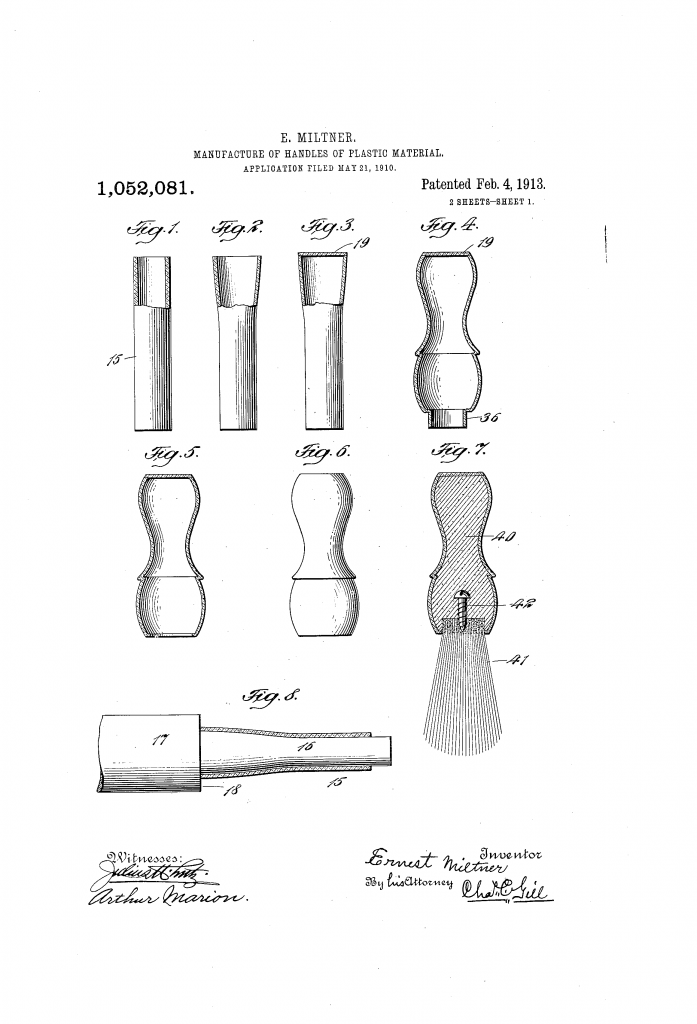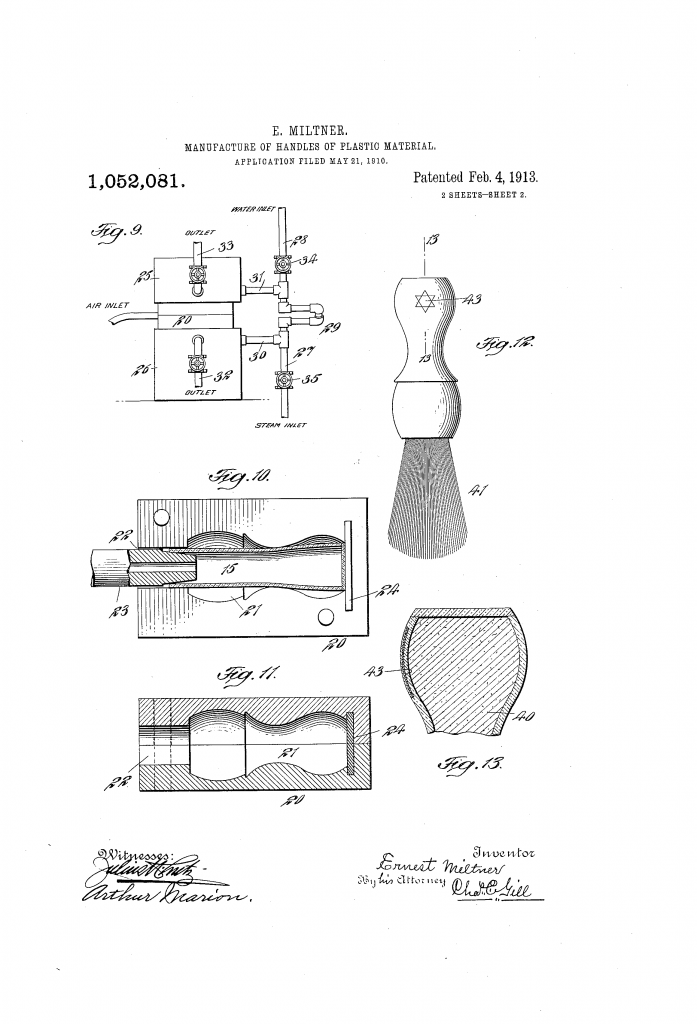There is more to revolutionising shaving than coming up with a innovative new razor. You’ll need to make machines for making blades. You need to find a way to pack the blades. You have to find way to present your wares. And you need a way to make an affordable shaving brush handle.
And the last bit is what Ernest Miltner filed a patent for in 1910. Filed on behalf of the Rubber & Celluloid Harness Trimming Co, the patent was granted in 1913. Even if it’s tangential to the act of shaving, I find it interesting enough to cover.
It is worth keeping in mind that artificial materials were a fairly new thing. Processes we are familiar with were new, or not even though of. Today “plastic” usually means a wide range of synthetic or semi-synthetic materials that use polymers as a main ingredient. In the early 20th century, plastic usually meant celluloid – although Bakelite was recently invented.
Celluloid – a mixture of nitrocellulose1 and camphor – is commonly considered the first thermoplastic. And that means that it can be moulded by heat… which is just how Ernest turned a tube of it into a shaving brush handle.
The patent and process
Referring to the patent and the drawings, the process is – in hindsight – easy to grasp.
One end of a celluloid tube is upset2 to the diameter of the bottom of the brush handle. A celluloid disk is attached to the wide end. The tube, now closed at one end, is places in a heated mould, and the tube is blown into the shape of a shaving brush handle by pressurised air.


The resulting handle is hollow and light weight, and can – according to the patent – be used while hollow, or filled with plaster of Paris or other materials.
The actual claim in the patent is a bit more verbose though. To qoute:
The method described of producing a hollow shell of definite outline from plastic material which consists in forming a tube of such material open at both ends, expanding one end portion of said tube, uniting to said end of the tube a closing disk of the same material, applying said tube thus formed within a die or mold, softening the tube therein by heat applied to the exterior of the die or mold, expanding the tube against the-walls of the die or mold by air underpressure delivered within the tube through its open end, and applying a cooling medium to the mold to cool the same and the shell therein.
From US patent 1,052,081
Final thoughts
I don’t think too many shaving brush handles are made in this manner today. But cheap, plastic handles are often injection moulded, which can be seen as a spiritual successor to this process. It should also be possible to recreate the process on a small scale, if an artisan wishes to make old style, plaster filled celluloid handles today.
The full patent can be read, as usual, on Google Patents.
Footnotes
- Also known as gun-cotton, which says a fair bit of it’s tendency to go Boom.
- Upset in this context means widening out into a cone.
